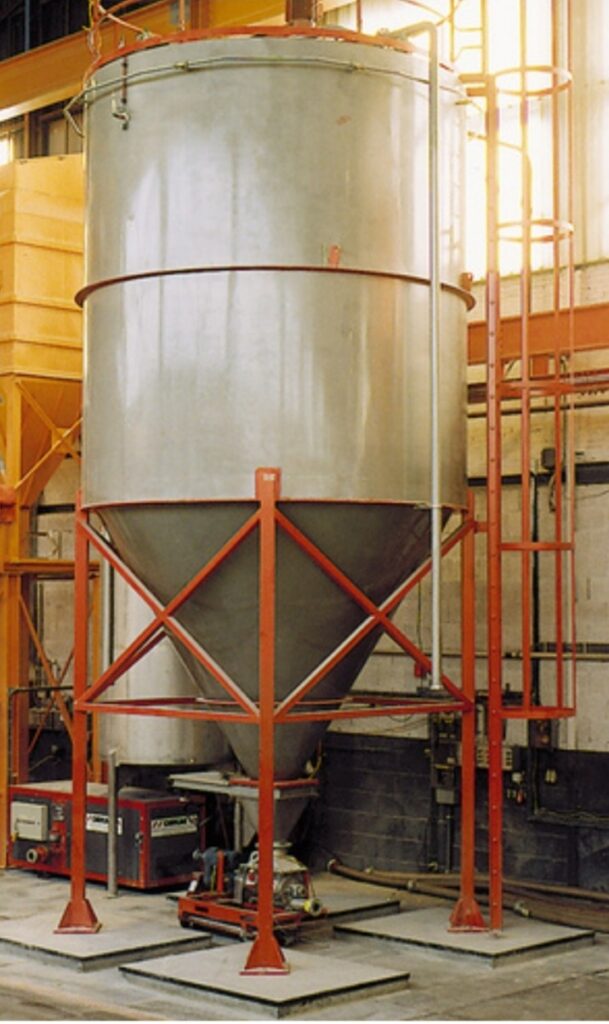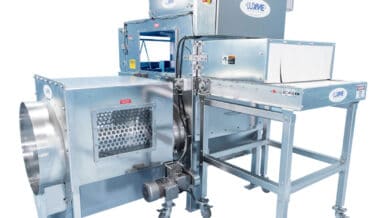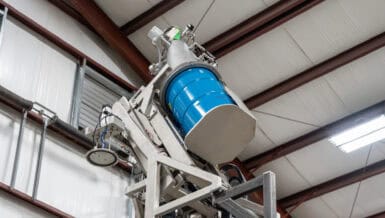The focus is on technical considerations that influence mixer selection, such as material properties, process requirements, and equipment configuration.
The relevance of mixing
A common step in bulk handling is the mixing of various bulk materials, sometimes with the addition of small or large quantities of liquids. Jansen&Heuning offers several types of mixers in a wide range of sizes and configurations. Each system is built on a modular design platform and can be tailored to the specific characteristics of the material, such as particle size, sensitivity to breakage, or cleaning requirements.
Double-shaft paddle mixers with coupled drive
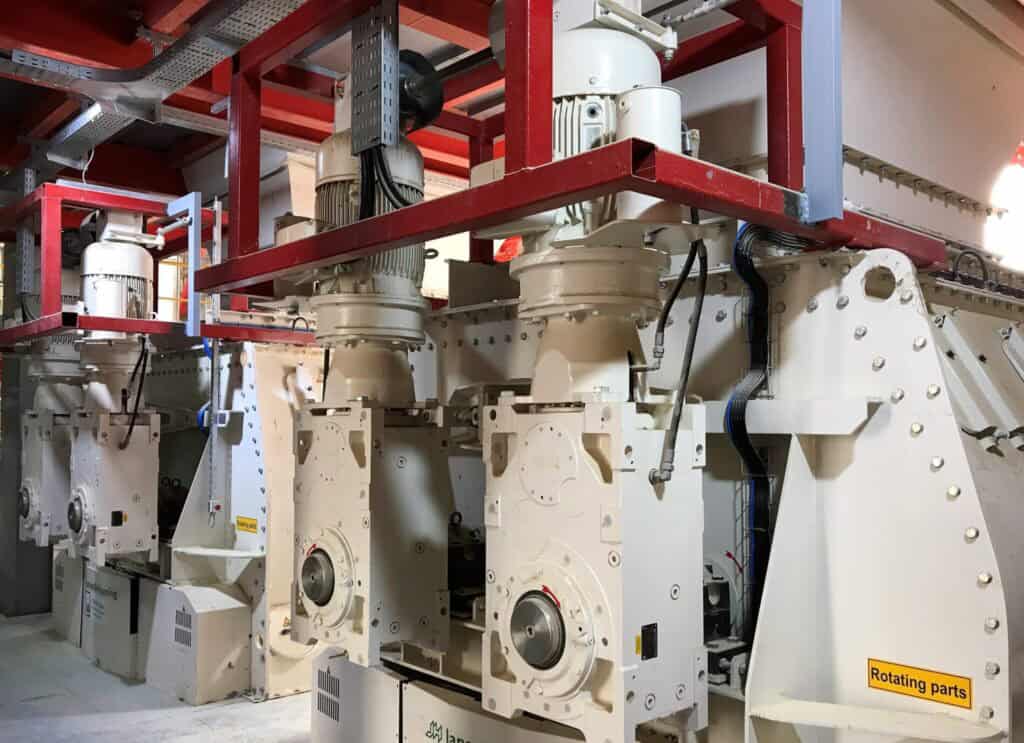
Advantages – These mixers ensure fast and intensive mixing because the paddles bring the product into a fluidized bed. They are suitable for both powders and granules, even with large batch volumes. The mixing time is relatively short, and the system can also distribute sensitive additives evenly.
Disadvantages – Energy consumption is relatively high. The construction is complex, which entails higher purchase and maintenance costs. With highly abrasive products, wear occurs on the paddles and tank.
Jansen&Heuning product range:
- capacity up to 10,000 liters
- capacity up to 50 tons/hour, 100 m³/hour
- drive up to 2 x 55 kW
Twin-shaft screw mixers
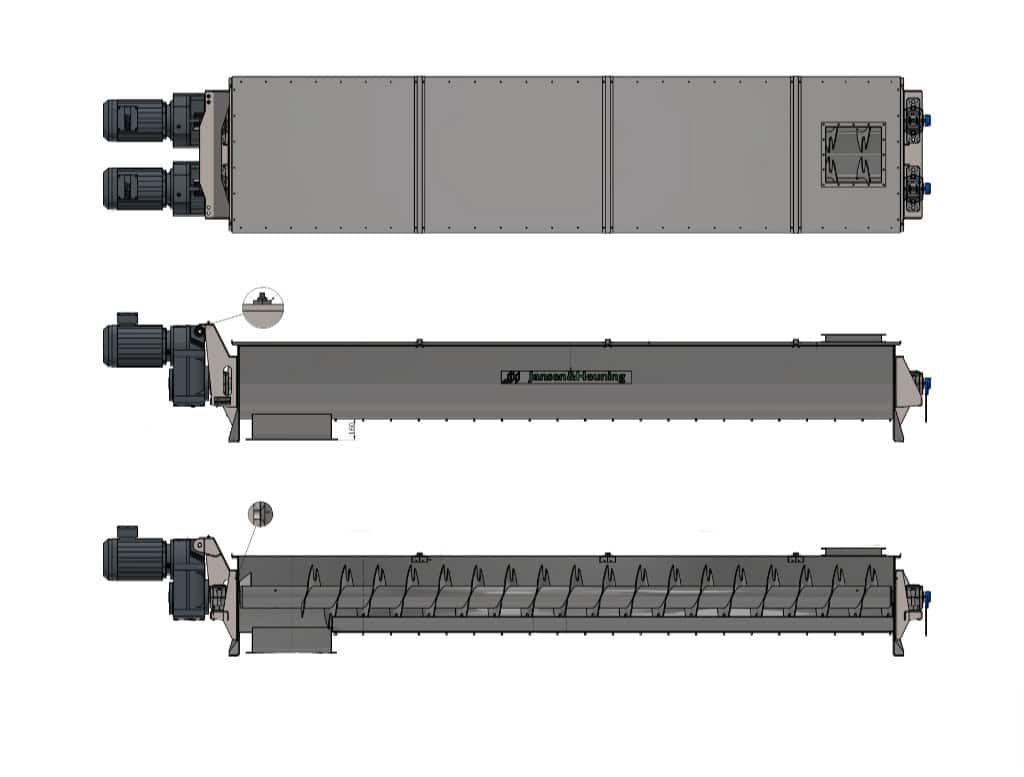
Advantages – These mixers have a gentle mixing action that causes minimal damage to particles. They are suitable for homogeneous mixing of large volumes, even with products of different densities. They often have a high loading and unloading capacity and can operate continuously or in batches.
The mixing shafts can be equipped with paddles, special screw blades with recesses or ribbons.
Disadvantages – The mixing time is longer than with intensive mixers. The system is less suitable for evenly mixing very small additives in low dosages. The construction height can be considerable, which makes installation in existing buildings difficult.
Jansen&Heuning product range:
- up to a diameter of 1,200 mm
- design can be freely adapted to customer requirements
Conical mixers
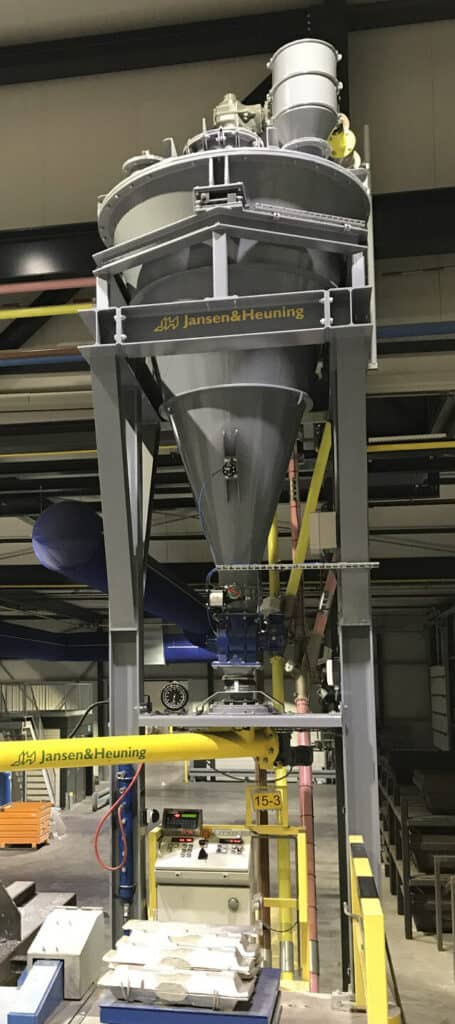
Advantages – These mixers are very suitable for delicate products and powders with large particle size differences, as they cause virtually no breakage. They offer gentle but effective mixing and are easy to clean. Their conical shape ensures that little product remains behind.
Disadvantages – The mixing time is relatively long. The capacity per unit of time is lower than with intensive mixers. They are less suitable for highly cohesive or sticky products.
Jansen&Heuning product range:
- capacity up to 20,000 liters
Selection considerations
The choice of mixer type depends largely on product properties such as particle size, cohesion, abrasiveness and fragility, but also on process requirements such as batch size, mixing time, ease of cleaning and possible combination with liquid dosing. A compromise is often sought between mixing quality, process efficiency and product integrity.
Mixing quality (COV)
The COV (coefficient of variation) is a commonly used measure for assessing the mixing quality of mixers for powders and granules. It indicates how homogeneously the components are distributed in a mixture.
What is the COV?
The COV is calculated as the standard deviation divided by the average of the measured concentrations, often expressed as a percentage.
A low COV means that the mixture is homogeneous, while a high COV indicates uneven distribution. Formula: COV (%) = (Standard deviation ÷ Average) × 100
Guidelines for mixers in animal feed and bulk powders:
- Well mixed: COV ≤ 5 per cent
- Acceptably mixed: COV between 5 and 10 per cent
- Poorly mixed: COV > 10 per cent
| Type mixer | Typical COV (%) | Average mixing time (min) |
| Double-shaft paddle mixer | 3 to 5% | 2 – 4 |
| Ribbon blender | 5- 10% | 8 – 15 |
| Conical mixer (Nauta) | 5- 8% | 15 – 30 |
In the animal feed industry, a COV of 5 percent or lower is often set as a target. For premixes, where micro-ingredients such as vitamins or medicines must be evenly distributed, stricter requirements sometimes apply (3 to 5 per cent).
Factors that influence the COV
Mixing time – Too short a mixing time leads to a higher COV. The mixing time must be long enough to achieve stable homogeneity, but mixing for too long can cause segregation.
Filling level – Mixers have an optimum load capacity (usually 60 to 80 percent of the mixing volume). Too much or too little filling increases the COV.
Particle size and density – Large differences in particle size or density can cause segregation, which worsens the COV.
Addition of liquids – The injection of liquids can cause clumping or uneven distribution, which negatively affects the COV.
Measurement of COV – In practice, samples are taken from different places in a mixture. The concentration of a marker (e.g. salt, microtracer or coloring agent) is analyzed. The COV is calculated using these values.
Practical importance:
- A low COV is essential for:
- Consistent product quality (e.g. efficiency, taste or solubility).
- Safety (when adding medicines or supplements to animal feed).
- Accurate dosing of micro-ingredients.


